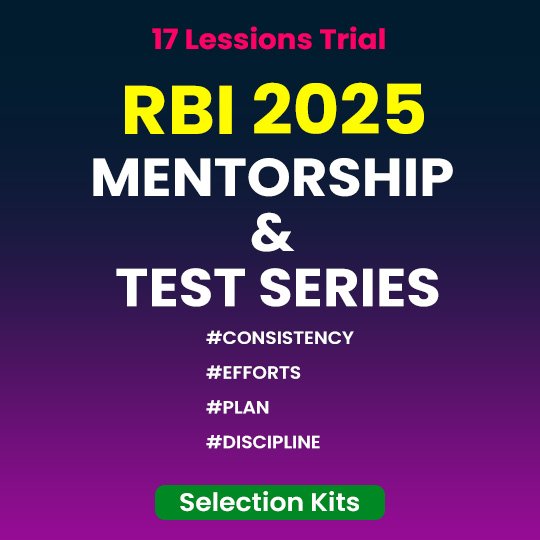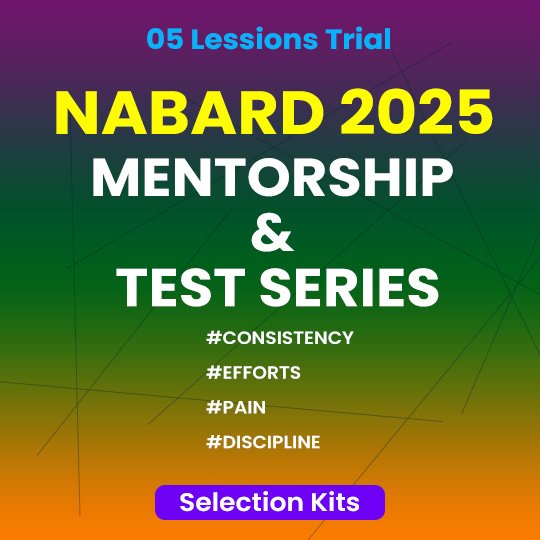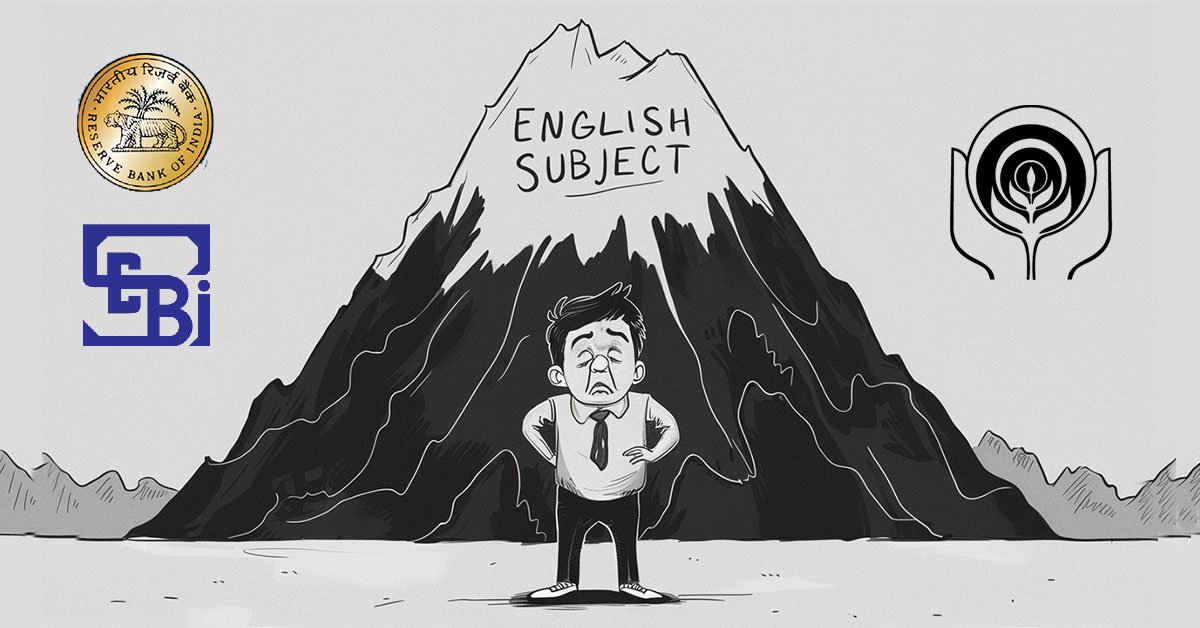Daily Current Affairs Quiz
20 November, 2025
National Affairs
1. Government May Widen PMJJBY & PMSBY Coverage
Source: Mint
Context:
The Centre is considering raising the insurance cover under the flagship schemes:
- Pradhan Mantri Jeevan Jyoti Bima Yojana (PMJJBY)
- Pradhan Mantri Suraksha Bima Yojana (PMSBY)
- Objective: Make life and accident insurance more user-friendly, effective, and financially meaningful for subscribers.
Proposed Changes
- Increase in Coverage Limit
- Current PMJJBY & PMSBY coverage: ₹2 lakh.
- Proposed increase: Up to ₹5 lakh for subscribers willing to pay a higher premium.
- Premium Payment Options
- Individuals may be allowed to pay premiums upfront for at least three years.
- Expanded Distribution
- Use government financial inclusion channels, such as Digital Banking Units (DBUs), to broaden access.
Pradhan Mantri Jeevan Jyoti Bima Yojana (PMJJBY)
- Type: Life insurance scheme
- Ministry: Ministry of Finance, Department of Financial Services
- Launch Date: May 9, 2015
Eligibility:
- Individuals aged 18–50 years
- Must have a savings bank account
Coverage:
- Sum insured: ₹2 lakh (proposed to increase up to ₹5 lakh)
- Premium: ₹436 per annum
Objective:
- Provide financial protection to families of policyholders in case of death
- Enhance social security and financial inclusion
Key Features:
- Low-cost, easy-to-enrol life insurance
- Automatic renewal through bank account debit
- Wide reach through banks and financial institutions
Pradhan Mantri Suraksha Bima Yojana (PMSBY)
- Type: Accident insurance scheme
- Ministry: Ministry of Finance, Department of Financial Services
- Launch Date: May 9, 2015
Eligibility:
- Individuals aged 18–70 years
- Must have a bank account
Coverage:
- Sum insured: ₹2 lakh (proposed to increase up to ₹5 lakh)
- Premium: ₹20 per annum
Objective:
- Provide protection against accidental death or disability
- Promote financial security for low-cost accidental insurance
Key Features:
- Low premium, simple enrolment process
- Coverage includes death, permanent total disability, and partial permanent disability
- Renewal via auto-debit from bank account
2. YUVA AI for ALL – National AI Literacy Initiative
Source: PIB
Context:
The Ministry of Electronics and Information Technology (MeitY), under the IndiaAI Mission, has launched ‘YUVA AI for ALL’, a first-of-its-kind free course that introduces the world of Artificial Intelligence (AI) to all Indians, especially the youth.
Launched By: Ministry of Electronics and Information Technology (MeitY), under the IndiaAI Mission
Course Overview:
- Duration: 4.5 hours, self-paced
- Mode: Online, free of cost
- Platforms: FutureSkills Prime, iGOT Karmayogi, and other popular ed-tech portals
- Audience: Students, professionals, and curious learners across India
- Certificate: Official certificate from the Government of India upon completion
Objectives:
- Make AI accessible, simple, and practical for everyone
- Empower 1 crore (10 million) citizens with foundational AI skills
- Promote ethical, responsible, and inclusive AI adoption
- Bridge the digital divide and prepare India’s workforce for an AI-powered future
Key Features / Modules:
- Introduction to AI: Understand what AI is and how it works
- AI in Everyday Life: Learn how AI is transforming education, creativity, and work
- Safe & Responsible AI Use: Guidance on using AI tools responsibly
- Real-World Applications: Explore practical AI use cases in India
- Future Opportunities: Insights into emerging AI trends and careers
- Engaging Indian Context: Examples and scenarios relevant to Indian learners
Significance:
- Free and accessible: Learn anytime, anywhere
- Future-ready skills: Equips learners with AI knowledge for professional and academic growth
- National impact: Supports India’s vision to become an AI-powered nation
- Collaborative potential: Schools, universities, and organizations can partner to expand reach and co-brand certificates
3. BIRSA 101 Gene Therapy
Source: PIB
Launch: India’s first indigenous CRISPR-based gene therapy for Sickle Cell Disease (SCD)
Developed By: CSIR–Institute of Genomics & Integrative Biology (IGIB)
Industry Partner: Serum Institute of India (SIIPL) – for technology transfer, scale-up, and affordable deployment
Named After: Birsa Munda, on his 150th birth anniversary
Objective
- Provide a curative treatment for Sickle Cell Disease, a hereditary blood disorder affecting primarily tribal populations.
- Achieve India’s vision of Sickle Cell–Free India by 2047.
- Offer a low-cost, indigenous alternative to global therapies costing ₹20–25 crore.
How BIRSA 101 Works
- CRISPR Gene Editing: Precisely edits the defective gene causing sickle-shaped red blood cells.
- Stem Cell Therapy: Edited stem cells are re-infused into the patient, enabling normal haemoglobin production.
- Potential One-Time Cure: Offers a lifelong solution rather than repeated treatments.
Key Features
- Fully indigenous CRISPR platform (enFnCas9) engineered by IGIB.
- Affordable solution compared to expensive global therapies.
- Public–private partnership: Ensures scalability, safety, and regulatory readiness.
- Backed by advanced translational research facility at CSIR-IGIB.
- Supports India’s Atmanirbhar Bharat goal in cutting-edge medicine.
4. Gujarat Hosts a Wild Tiger in Ratanmahal Sanctuary
Context:
For the first time in decades, a wild tiger has permanently settled in Gujarat’s Ratanmahal Wildlife Sanctuary, staying for nine continuous months. Gujarat now hosts all three big cats—Asiatic lion, Indian leopard, and tiger—within a shared natural landscape, a unique ecological milestone in India.
About Ratanmahal Wildlife Sanctuary
Location:
- Dahod district, Central Gujarat, along the Gujarat–Madhya Pradesh border.
- Sloth bear habitat extends into Jhabua district, Madhya Pradesh.
History:
- Declared a wildlife sanctuary in March 1982.
- Covers 65 sq km of reserve forests across 11 villages, with an interaction zone of 41 surrounding villages.
- Forests once belonged to the Devgadh Baria princely state.
Key Ecological Features
- Forest Types: Dry teak forests, mixed deciduous forests, Sadad & Timru patches, extensive dry bamboo brakes.
- Flora: High density of mahuda trees, a crucial food source for sloth bears.
- Fauna: Habitat for leopard, palm civet, four-horned antelope, langurs, sunbirds, green barbets, junglefowl, pit viper, and more.
- Sloth Bears: Highest population density in Gujarat, prime for behavioral studies.
- Topography: Rugged, hill-station-like environment attractive to wildlife and visitors.
5. ISRO Tests Bootstrap Mode Start on CE20 Cryogenic Engine
Source: ET
Context:
ISRO has successfully demonstrated the bootstrap mode start of the CE20 cryogenic engine—which powers the upper stage of the LVM3 rocket—marking a major step toward enhancing mission flexibility and multiple-restart capability for future launches.
Key Details of the Test:
Test Conducted Under Vacuum
- Location: High-Altitude Test (HAT) Facility, ISRO Propulsion Complex, Mahendragiri.
- Date: November 7.
- Duration: 10 seconds.
- Conducted under vacuum conditions, simulating space environment.
What Is Bootstrap Mode Start?
- A method where the engine initiates ignition and builds up to stable operation without any external start-up assistance.
- Eliminates the need for start-up gas bottles required for each restart in current systems.
Why This Matters
Enables Multiple In-Flight Restarts
Future missions—especially multi-orbit deployments and complex space manoeuvres—require the CE20 engine to restart multiple times.
- Bootstrap mode reduces hardware requirements.
- Enhances mission flexibility and launch efficiency.
Reduces Weight and Increases Payload Capacity
- Removing start-up gas bottles and associated systems will free up mass.
- This can potentially increase payload capability for LVM3 missions.
Key for Advanced Missions
- Multi-orbit payload deployment.
- Interplanetary missions requiring multiple burns.
- Human spaceflight scenarios needing extra manoeuvrability.
Banking/Finance
1. IRDAI’s Bima Gram API
Source: TH
Context:
The Insurance Regulatory and Development Authority of India (IRDAI) has introduced the Bima Gram API to digitally strengthen insurance penetration in rural India. The pilot phase has been successfully completed.
Key Features of Bima Gram API
Digital Validation of Rural Policies
- Insurers can digitally authenticate policies sold in rural areas.
- Policies can be accurately mapped to specific Gram Panchayats.
Reduction of Manual Processes
- Cuts down manual paperwork.
- Improves accuracy and reduces errors in rural insurance reporting.
Enhanced Speed & Reporting Efficiency
- Faster processing of rural business data.
- Strengthens compliance and rural business monitoring.
Creation of Baseline Datasets
- Helps insurers build reliable data repositories on:
- Rural insurance coverage
- Penetration patterns
- Policy distribution at village level
- Supports future product planning, pricing, and resource allocation.
2. NBFCs Seek Reforms in Debt Recovery & Funding Framework
Source: ET
Context:
During the pre-Budget meeting with Finance Minister Nirmala Sitharaman, representatives of the Banking, Financial Services and Insurance (BFSI) sector, especially NBFCs, presented key demands aimed at improving liquidity, recovery efficiency, and deposit mobilisation.
Key Demands Made by NBFCs
Dedicated Refinance Window for NBFCs
- Similar to the National Housing Bank (NHB) model.
- Meant to ensure a steady and sustainable flow of funds.
- Funds raised through this window should be exclusively used for MSME and priority sector lending.
- Expected to help smaller NBFCs facing liquidity constraints.
Amendments to SARFAESI Act
Current Issue
- Only loans above ₹20 lakh come under SARFAESI recovery provisions for NBFCs.
- Smaller NBFCs with smaller ticket-size loans are excluded.
Proposal
- Reduce the threshold from ₹20 lakh to ₹1 lakh.
- Enables more NBFCs to use SARFAESI for efficient recovery.
- Strengthens overall asset quality and recovery mechanisms.
Remove TDS on Non-Individual Borrowers
- NBFCs argued that TDS deducted from non-individual borrowers (corporates, firms, etc.) does not generate additional revenue for the government.
- Requested the government to remove TDS requirement, easing compliance and cash flows.
Education Loan Deduction Benefit for NBFCs
- Proposal to notify NBFCs under Section 80E of the Income Tax Act.
- This would allow borrowers taking education loans from NBFCs to claim tax deduction on interest.
- Currently, this benefit is available only for loans from banks and notified financial institutions.
3. Bima Sugam
Context:
The Insurance Regulatory and Development Authority of India (Irdai) is preparing to launch the Bima Sugam digital marketplace in December 2025 to enhance transparency and efficiency in insurance services.
About Bima Sugam
- Launched by: Insurance Regulatory and Development Authority of India (IRDAI)
- Objective: To create a centralized, digital platform for insurers, agents, and intermediaries to manage insurance operations, improve efficiency, and promote transparency.
- Target Users: Insurance companies, intermediaries (agents, brokers), and policyholders.
Key Features
- Unified Portal
- Acts as a single-window platform for all insurance transactions, data management, and reporting requirements.
- Integrates multiple insurance products—life, health, general insurance—for smooth operations.
- Policy Management
- Facilitates issuance, tracking, and servicing of insurance policies digitally.
- Supports real-time updates of policyholder data, premium payments, and claims status.
- Intermediary Registration
- Enables agents and brokers to register and update their credentials online.
- Tracks intermediary performance and ensures compliance with IRDAI norms.
- Digital Monitoring & Compliance
- Provides IRDAI with regulatory oversight by consolidating insurance data.
- Reduces paperwork, enables faster audits, and improves data accuracy.
- Integration with Other IRDAI Initiatives
- Works in coordination with platforms like Bima Vahak and Bima Gram API to enhance rural and digital insurance penetration.
- Supports reporting of rural insurance coverage to meet the “Rural & Social” (RuSo) norms.
Significance
- Efficiency: Simplifies administrative tasks for insurers and intermediaries.
- Transparency: Provides real-time, centralized data for regulators, insurers, and policyholders.
- Financial Inclusion: When linked with Bima Gram API, ensures rural populations are accounted for in insurance coverage.
- Digital Transformation: Part of IRDAI’s push to move India’s insurance sector to paperless, tech-driven operations.
Other Digital Interventions
National Health Claims Exchange (NHCX)
- Digitises hospital-insurer claim exchanges.
- Enables common data standards, reducing processing time and disputes.
- Policyholders can track claim status in real time.
- Adoption is uneven across states and hospital networks.
Ayushman Bharat Health Account (ABHA ID)
- Consolidates medical records digitally.
- Reduces information gaps during claims.
Cashless Everywhere Initiative (2024)
- Allows cashless treatment even in non-network hospitals.
- Ensures faster processing and eases burden during emergencies.
4. Sebi Considers Settlement Netting for FPIs & Mutual Fund Regulation Overhaul
Source: BS
Context:
The Securities and Exchange Board of India (Sebi) Chairman Tuhin Kanta Pandey said the regulator is examining whether foreign portfolio investors (FPIs) can be allowed to net their settlements for trades executed within the same day, a move that would mark a major shift from the current trade-wise settlement regime.
Settlement Netting for FPIs
Current Regime
- Foreign Portfolio Investors (FPIs) are required to give and take delivery for every trade.
- This trade-wise settlement increases operational complexity and costs.
Proposed Change
- Sebi is examining the possibility of netting settlements for trades executed on the same day.
- Netting would allow FPIs to settle the net difference rather than every individual trade, easing operational convenience and reducing costs.
Related Reforms
- Digital FPI Registration
- End-to-end paperless system with digital signatures.
- Expected to reduce registration timelines from months to days.
- SWAGAT-FI Category
- Fast-track route for trusted foreign institutions.
- May allow investments via other FEMA-approved routes without extra compliance.
- Discussions ongoing with RBI and Finance Ministry.
- Market Development Measures
- Review of short selling and securities lending/borrowing to strengthen cash-derivatives linkages.
- Introduction of a closing auction session to improve price discovery.
- Promotion of corporate bond market and retail participation.
- Facilitating institutional participation in commodities markets with robust risk controls.
5. Capital Gains Account Scheme (CGAS)
Source: BL
Context:
- The Finance Ministry has authorised 19 private sector banks, including ICICI Bank, HDFC Bank, Axis Bank, Kotak Mahindra Bank, and Yes Bank, to accept deposits under the Capital Gains Account Scheme (CGAS).
- Previously, CGAS accounts could be opened only with public sector banks and IDBI Bank, except in rural areas.
- Rural branch restrictions continue: only urban and semi-urban branches can accept deposits.
- Rural branch definition: centre with population < 10,000 (2011 census).
Key Changes
- Section 54GA Addition
- Allows capital gains arising from transfer of assets on shifting industrial undertakings from urban areas to SEZs to be deposited under CGAS.
- Section 54 Background
- Exempts Long Term Capital Gains (LTCG) tax on sale of plot or old house if proceeds are reinvested in a new house or specified assets:
- One year before or within two years after sale for purchase
- Within three years if building a new house
- Exempts Long Term Capital Gains (LTCG) tax on sale of plot or old house if proceeds are reinvested in a new house or specified assets:
Capital Gains Account Scheme (CGAS)
- Launched by: Ministry of Finance, Government of India
- Objective: To allow taxpayers to deposit capital gains arising from the sale of assets when they cannot immediately invest in specified assets to claim exemption from capital gains tax under the Income Tax Act.
- Governing Law: Sections 54, 54B, 54D, 54EC, 54F, 54G, 54H of the Income Tax Act, 1961.
Types of CGAS Deposits
Deposit Account-A
- Savings deposit form
- Withdrawals: flexible, anytime by the depositor
- Interest: as per savings account rates
Deposit Account-B (Term Deposit)
- Fixed-term deposit (cumulative or non-cumulative)
- Withdrawals: only after maturity
- Deposits can be made: lump sum or instalments
- Submission aligned with Income Tax Return (ITR) filing deadline under section 139(1)
Capital Gain Term Deposit Account Features
- Minimum deposit: ₹1,000 (then in multiples of ₹1)
- No maximum limit
- Tenor:
- Maximum: 2–3 years from date of asset transfer
- Minimum: 7 days (maturity option) / 6 months (income option)
- Auto-closure at end of tenor
- Premature withdrawal penalty: 1% interest
- Restrictions:
- No loans allowed against this deposit
- Cannot be used as margin money or collateral for fund-based/non-fund based facilities
6. RBI Adds Seven Unauthorised Forex Platforms to Alert List
Source: FE
Context:
- The Reserve Bank of India (RBI) maintains an ‘Alert List’ of unauthorised forex trading platforms to warn the public against potential fraud.
- Entities on the list are not authorised under the Foreign Exchange Management Act (FEMA), 1999, nor permitted to operate Electronic Trading Platforms (ETPs) for forex transactions.
Recent Additions
RBI has added seven new entities/platforms:
- Starnet FX
- CapPlace
- Mirrox
- Trive
- NXG Markets
- Nord FX
With this addition, the total number of unauthorised forex entities on RBI’s alert list has risen to 95.
Forex Trading Platforms
Forex (Foreign Exchange) trading platforms are software applications that allow individuals and institutional investors to buy, sell, and manage currencies in the global foreign exchange market.
Purpose:
- Enable trading of currency pairs (e.g., USD/INR, EUR/USD).
- Provide real-time pricing, charts, technical analysis tools, and risk management features.
Electronic Trading Platforms (ETPs)
- Definition: Electronic Trading Platforms (ETPs) are digital systems that allow investors, traders, and institutions to buy, sell, or exchange financial instruments electronically, without the need for physical trading floors.
- Use Cases: Forex, equities, commodities, derivatives, and government securities.
- Key Feature: Real-time trade execution, price discovery, and settlement through secure electronic systems.
Foreign Exchange Management Act (FEMA), 1999
- Full Name: Foreign Exchange Management Act, 1999
- Enacted: 1999, replacing the Foreign Exchange Regulation Act (FERA), 1973
- Purpose: Facilitate external trade and payments and promote orderly development and regulation of the foreign exchange market in India.
- Regulator: Reserve Bank of India (RBI), with oversight from the Central Government.
7. Axis Bank Launches Curated Corporate Salary Programme for Start‑up Employees
Source: BL
Context:
- Axis Bank has introduced a specialised corporate salary programme targeting employees of funded start‑ups and digital businesses under its New Economy Group (NEG).
- The initiative is aimed at start‑up employees, especially those in Series A and above funded companies, across innovation hubs in India.
Features of the Programme
- Zero-balance savings account for employees
- Comprehensive insurance cover:
- Premium: ₹2,499 per person per year
- Coverage: Employee, spouse, and children up to ₹30 lakh
- Exclusive credit-card privileges
- Personalised loan options
8. RBI’s MuleHunter.ai Detects Fraudulent Mule Accounts in Real-Time
Context:
- MuleHunter.ai is an AI-enabled tool developed by the Reserve Bank Innovation Hub (RBIH) to detect and flag mule accounts in real-time.
- Purpose: Prevent fraudulent funds from circulating through the banking system.
Mule Account
A mule account is a bank account used to receive, transfer, or withdraw money on behalf of someone else, often for illegal or fraudulent activities.
The person operating the account—called a money mule—may knowingly or unknowingly help criminals move illicit funds.
Related RBIH Initiatives
- United Lending Interface (ULI):
- A digital public infrastructure for the lending ecosystem.
- Provides banks and NBFCs access to financial and non-financial data of borrowers.
- Enhances credit underwriting, disbursal efficiency, and gives consumers a wider choice of loan offers.
Significance
- Supports a safer digital transaction ecosystem by proactively identifying fraudulent activity.
- Essential for first-time digital users where the risk of fraud is higher.
- Strengthens India’s fraud prevention infrastructure in banking and lending.
Agriculture
1. India Will Become Hub of Natural Farming: PM Modi
Source: TH
Context:
Prime Minister Narendra Modi inaugurated the South India Natural Farming Summit 2025 in Coimbatore, an event organised by farmers’ associations to promote the ideals of noted organic farming scientist G. Nammalvar. He outlined India’s vision to emerge as a global centre for natural farming, backed by science, traditional wisdom, and strong government support.
Key Highlights:
India’s Vision for Natural Farming
- PM Modi said India is poised to become the world’s hub of natural farming.
- Natural farming is described as the “need of 21st-century agriculture”, essential for:
- Restoring soil health,
- Reducing dependence on chemical fertilisers and pesticides,
- Ensuring sustainable, climate-resilient agriculture.
- Stressed the goal of making natural farming a fully science-backed movement.
Role of Science, Tradition & Youth
- Modi highlighted the synergy of traditional knowledge + scientific strength + government policy.
- Appreciated the growing interest of educated youth in agriculture and adoption of modern techniques.
- Urged research institutions to integrate natural farming into academic curriculum and use farmer fields as living laboratories.
Progress Under National Mission on Natural Farming (NMSF)
- The Mission launched last year has already impacted lakhs of farmers.
- In Tamil Nadu alone, 35,000 hectares are under organic and natural farming.
- Modi urged farmers to start by converting at least one acre to natural farming each season and gradually expand coverage.
Strengthening FPOs & Promoting Minor Millets
- PM appealed to the Tamil Nadu government to use Farmer Producer Organisations (FPOs) to promote natural farming.
- Emphasised the importance of minor millets, aligning with India’s nutritional and climate-smart agriculture goals.
Support Through Government Schemes
- Modi highlighted several policy achievements supporting farmers:
- Agricultural exports have doubled in the past 11 years.
- Over ₹10 lakh crore assistance given through Kisan Credit Card (KCC) for crops, livestock, and fisheries.
- GST reduction on bio-fertilisers has lowered production costs.
- Released the 21st installment of PM-Kisan Samman Nidhi, transferring ₹18,000 crore directly to farmers.
- Total transfers under PM-Kisan now exceed ₹4 lakh crore.
Advocacy for Multi-Crop Agriculture
- Modi cautioned against monoculture and encouraged multi-cropping systems.
- Cited examples from Kerala and Karnataka hill regions, where diverse cropping improves productivity and resilience.
2. Groundwater Contamination
Source: TH
Context:
India is facing a deepening groundwater contamination crisis that threatens public health, agriculture, economic productivity, and long-term human capital. The Annual Groundwater Quality Report 2024 shows widespread contamination across hundreds of districts, exposing millions of people to toxic substances such as uranium, fluoride, nitrate, and arsenic. This is not only an environmental issue but a major economic and developmental challenge.
Scale of the Crisis
alarming contamination levels
- Nearly 20% of groundwater samples across 440+ districts exceed safe contamination limits.
- Punjab: Almost one-third of samples have uranium above permissible limits; fluoride, arsenic, and nitrates are also common.
- India depends heavily on groundwater:
- 600 million people rely on it for drinking water.
- It is the primary source of irrigation in most states.
enormous economic losses
- The World Bank estimates that environmental degradation, largely from polluted water and soil, costs India $80 billion annually (≈6% of GDP).
- Health costs from unsafe water run into billions.
- Waterborne diseases cause millions of lost working days, reducing labour productivity.
Human Capital at Risk
severe health impacts
- Fluorosis in districts like Mehsana (Gujarat) has disabled workers, reducing their earning capacity.
- Diarrhoeal diseases continue to kill hundreds of thousands of children under five.
- Exposure to arsenic and fluoride causes cognitive impairment, skeletal deformities, and long-term disability.
deepening inequality
- Wealthier families can afford bottled water or filtration systems.
- Poor households, especially in rural areas, rely entirely on contaminated aquifers.
- Out-of-pocket health spending pushes families into debt traps.
- Children exposed early face lifelong challenges in health, learning, and employability.
Impact on Agriculture and Exports
declining soil and crop health
- Nearly one-third of India’s land suffers from soil degradation.
- Polluted irrigation water introduces heavy metals and residues, reducing crop yields.
- Farms near polluted water bodies show lower productivity and income.
threats to export markets
- Global buyers increasingly demand clean and traceable produce.
- Export rejections due to contamination are rising.
- If contamination reaches staples such as rice, vegetables, or fruits, India’s $50 billion agricultural export sector faces serious risk.
unsustainable water extraction
- Punjab extracts groundwater at 1.5 times sustainable limits.
- Farmers drill deeper, encountering more toxic layers.
- Deeper drilling → poorer quality water → more fertilisers → worsening contamination cycle.
Way Forward
Nationwide, real-time groundwater monitoring
- A centralised, open-data platform is essential.
- Communities and farmers need transparent access to water quality information.
Strict enforcement on industrial effluents and sewage
- Current enforcement is weak.
- Industries often pass the environmental cost to society.
- Strong penalties and monitoring systems must be implemented.
Sustainable agricultural reforms
- Shift from chemical-heavy practices to:
- Crop diversification
- Organic farming
- Micro-irrigation (drip, sprinkler)
- Reduce fertiliser and pesticide misuse that contaminates aquifers.
Decentralised treatment and purification
- Community water treatment units provide immediate relief.
- Example: Nalgonda (Telangana) — purification systems have reduced fluorosis cases among children.
- Low-cost filters and village-level purification should be scaled up.
Farmer awareness and export-readiness
- Training on safe irrigation, contamination risks, and global standards.
- Stricter export quality checks must protect India’s credibility.
Manage over-extraction
- Incentivise less water-intensive crops (pulses, maize).
- Pilot programmes in Punjab and Haryana show improved aquifer health and stable farmer incomes.
Facts To Remember
1. Curaçao Becomes Smallest Nation to Qualify for FIFA World Cup
Curaçao, a Caribbean island and autonomous territory within the Kingdom of the Netherlands.
2. Banks to Use Dedicated ‘1600’ Number Series from Jan 1, 2026
Regulator: Telecom Regulatory Authority of India (TRAI)
Purpose: Curb impersonation-based financial frauds through voice calls by creating a dedicated numbering series for regulated financial institutions.
3. PM Modi Releases ₹100 Commemorative Coin and Postal Stamps in Puttaparthi
Prime Minister Narendra Modi visited Prasanthi Nilayam, Puttaparthi (Andhra Pradesh) to participate in the centenary celebrations of Sri Sathya Sai Baba. During the event, he released a ₹100 commemorative coin and a set of special postal stamps honouring the spiritual leader’s 100th birth anniversary.
4. Union Minister Ashwini Vaishnaw Participates In Bloomberg New Economy Forum in Singapore
Electronics and IT Minister Ashwini Vaishnaw has asserted that India will be on par with other semi-conductor chip-making nations by 2032.
5. Union Minister Bhupender Yadav Addresses 11th JCM Partner Countries Meeting in Brazil
Union Minister of Environment, Forest and Climate Change Bhupender Yadav highlighted the importance of cooperative mechanisms at a time when the world is seeking scalable, equitable, and technology-driven climate solutions.
6. President Droupadi Murmu To Inaugurate 2nd Edition of Bharatiya Kalamahotsav On Nov 21
President Droupadi Murmu will be formally inaugurating the 2nd edition of Bharatiya Kalamahotsav at Rashtrapathi Nilayam at Bollaram tomorrow evening.
7. 56th International Film Festival of India To Begin Today
The 56th International Film Festival of India (IFFI 2025) is all set to begin in Goa today.
8. Minister Amit Shah Highlights NCDC’s Role in Empowering Cooperatives
Union Cooperation Minister Amit Shah has said that National Cooperative Development Corporation-NCDC has emerged as a strong medium for empowering cooperatives.
9. NITI Aayog Releases Report on Water Budgeting for Aspiration Blocks
NITI Aayog today released a report on Water Budgeting in Aspiration Blocks to enhance local water security.



















